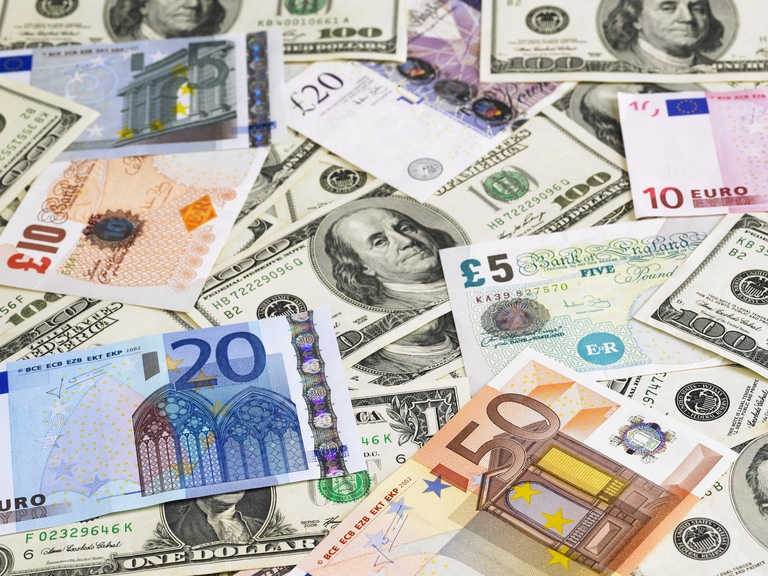Fears over higher rates and slower growth has tipped the FTSE100 to its worst day since the big sell-off in March, as well as its lowest levels since then, as well as clobbering the FTSE250. The weakness has also manifested itself across the rest of European markets, after last night’s Fed minutes showed that the decision to pause rate hikes wasn’t the cut and dried decision that many thought it was.
Europe
The clear willingness amongst many FOMC members to do much more on rates, and the clear hawkish guidance spooked markets and along with today’s bumper ADP payrolls report, cemented the idea that Fed officials are very serious about meeting their inflation target.
The resilience of the labour market serves only to reinforce this view, as it will give the FOMC more latitude to be more aggressive when it comes to rates. This has also seen the DAX and CAC 40 slide back sharply, with the DAX falling to 3-month lows, while the CAC40 has undergone its worst day since the March sell-off.
Not only are we seeing US rates head higher, but UK rates are surging as well, and not just on the short end. While the 2-year gilt is now above 5.5%, and a new 15 year high, the 10-year gilt yield is back at the highs seen last October above 4.6%, as traders revise up their estimates of when the Bank of England is likely to stop hiking rates, with the latest being at 6.5% early next year.
This apparent willingness by central banks to crush demand, and risk pushing the economy into a recession to get inflation under control, is prompting investors to pare down their exposure to equity markets, hence today’s sell-off.
We’ve seen sector wide weakness today from commercial real estate, house builders, basic resources to consumer discretionary, although the weakness in retail is also being driven by JD Sports and Next going ex-dividend.
Jet2shares have plunged despite reporting full year revenues of just over £5bn, and pre-tax profits of £371m. The announcement of the retirement of Chairman Philip Meeson may well be having some part to play in today’s weakness, although it could also be argued that the reluctance to provide definitive guidance for the upcoming year may also be impacting. Altogether the outlook remains promising with seat capacity for this summer up by 7.5% on last year. The rest of the travel sector has also seen significant losses today on concern the impact that higher rates might have on demand, with TUI, Wizz Air and IAG all sharply lower.
Electrical goods retailer Currys has also seen its share plunge to record lows after announcing it wouldn’t be paying a final dividend. Total revenues for the year saw a 6% decline to £9.5bn, although group adjusted profit before tax came in at £119m, with the Nordic region acting as a specific drag, as EBIT fell 82% to £26m. On a pre-tax basis the company slid to a £450m loss due to a £511m cash impairment on its UK business derived from the merger of Dixons and Carphone back in 2014.
Trading so far year to date has been in line with expectations, however the company said the outlook remains very uncertain in all of its main markets. Currys appears to be very much in cash-saving mode over concerns that the rising cost-of-living will continue to impact on high value electrical items.
There’s been little in the way of positive news for UK stocks today, although utilities are just about eking out some gains after the UK government said that Thames Water would probably avoid nationalisation, helping United Utilities and Severn Trent to outperform.
US
US markets opened sharply lower after the latest ADP payrolls report saw a huge 497k jobs added in June, sending yields soaring, and placing even greater downward pressure on risk assets. The US 2-year yield has pushed up to its highest level since 2007, while the 10-year yield has pushed above 4% for the 1st time since March, with losses equally weighted across the indices between the S&P500, Russell 2000 and Nasdaq 100.
The resilience in the US economy was reinforced further with a correspondingly positive ISM services report which saw an improvement to 53.9, with an improvement in the employment component to 53.1, while prices paid softened to 54.1. All in all, while the labour market continues to look resilient, inflation pressures have continued to subside.
With such a hot labour market, even accounting for the fact that the jobs gains are in the lower paid sectors of the economy, the markets are pricing the likelihood that the Fed could hike even more aggressively. This in turn raises the prospect of a possible policy error in that Fed overtightens, as attention turns to tomorrow’s payrolls numbers, and next week’s CPI report.
Meta Platform shares are in focus after their new app Threads got millions of sign-ups in the first few hours, with some suggesting that it could be a real threat to Twitter. Early indications suggest that hype could be slightly overstated given the lack of a desktop application, which would appeal more to the power users that twitter has and the Tweetdeck app which uses lists, teams, and other useful features.
Exxon Mobil shares are on the slide after the oil company warned that lower natural gas prices and refining margins will mean that Q2 earnings are likely to be lower by about $4bn, and below previous estimates.
Ford shares have also slipped back despite reporting a 9.9% increase in Q2 sales from April through June due to a strong performance in its truck division, with F-truck sales rising 34%. EV sales fell 2.8%.
Microsoft shares are a bright spot on an expectation that it could well be the next $3trn company on the back of its exposure to AI.
FX
The US dollar initially didn’t benefit from the hot ADP employment report, losing ground to the pound and the euro largely due to increased expectations of higher interest rates from the likes of the Bank of England and the European Central Bank. This quickly changed in the aftermath of the ISM services numbers, which were solid across the board, from headline, to employment, to new orders, pushing the greenback to the highs of the day, as traders looked to price in further rate hikes from the Fed beyond July and September.
The pound appears to be getting a modicum of support from UK gilt yields pushing to their highest levels since 2008 as traders ramp up Bank of England rate hike wagers in the face of expectations of stickier inflation, with the latest being that UK rates could peak at 6.5% early next year.
The risk off tone seen in equity markets is helping to give the Japanese yen a modestly bid tone, pushing it to its highest levels in over a week.
The biggest losers today have been the likes of the commodity currencies, the Norwegian Krone, Australian and Canadian dollar.
Commodities
Despite today’s slide in equity markets and concerns over a possible recession, crude oil prices were initially only modestly lower, as concerns over demand were offset by the prospect that any further weakness will invite the likelihood of further output cuts from the likes of Russia and Saudi Arabia. These losses accelerated in the wake of this afternoon’s surge in the US dollar.
Gold prices have fallen for the second day in a row, back towards the recent lows after today’s red-hot ADP and ISM reports sent yields surging, reducing the allure of the yellow metal, with the next support being at the 200-day SMA currently around $1,870 an ounce.
Volatility
Following the holiday break for US markets, trading resumed on Wednesday with soft commodities once again proving to be the standouts. It was however something of a mixed bag, with Wheat prices jumping more than 5% amidst fears that heavy rains could delay US harvests. That was sufficient to propel one day vol on the contract to 84.02% against 45.59% for the month.
However, the pattern wasn’t repeated elsewhere in the sector, with Corn resuming trade in a turbulent manner before finding itself once again back on a downward trajectory. One day vol here printed 69.25% against 44.34% for the month. And Soybeans also remained active with more of those WASDE planting report inspired gains from the end of last week being steadily eroded. One day vol here stood at 55.17% against 32.06% for the month.
Activity elsewhere was relatively subdued although CMC’s proprietary basket of Cannabis growers saw elevated levels of price action. The cohort’s valuation jumped at the end of last week but gains are already looking as if they could be short lived. There are broader concerns over the rate at which many of these companies are consuming cash, with regulatory change slow to transpire. One day vol on the basket sat at 76.41% against 67.15% for the month.






